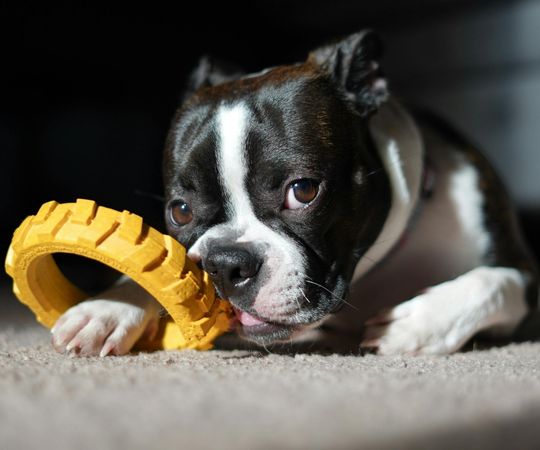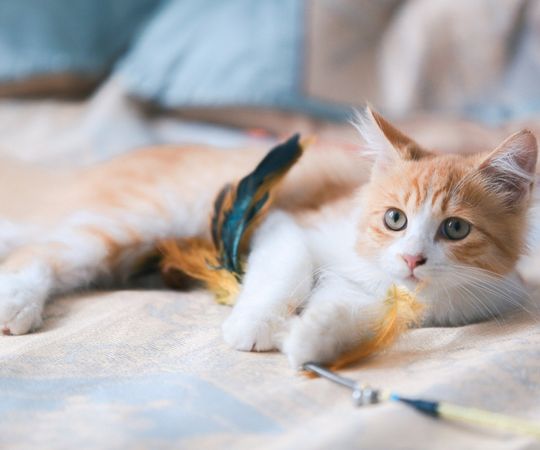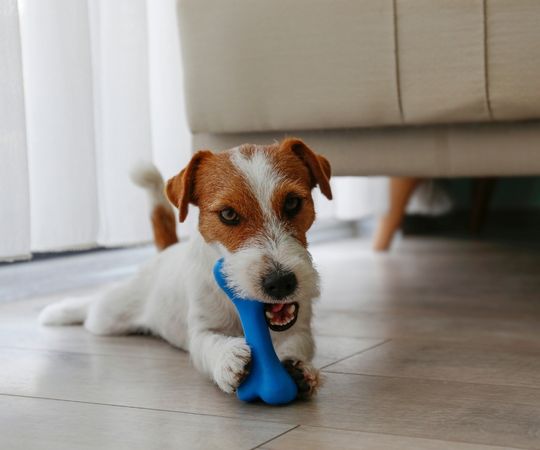If you’re a dog owner, you’ve likely experienced this heartwarming scene: your pup trots over with a toy in their mouth, dropping it at your feet with an eager expression.
It’s a behavior that never fails to bring a smile to our faces, but have you ever wondered why dogs do this? Is it just a random act of cuteness, or is there a deeper meaning behind it?
In this article, we’ll dive into the fascinating world of canine behavior to uncover the reasons behind this adorable habit.
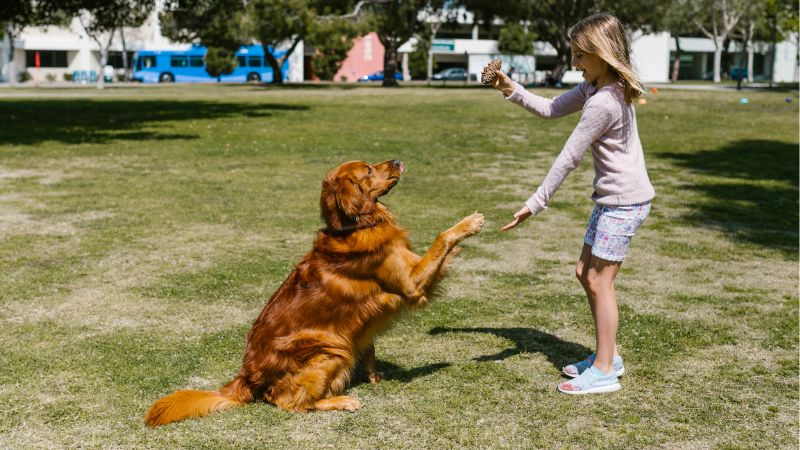
Why Does My Dog Bring Me Toys?
Dogs often bring you toys for a few simple reasons. This behavior helps them connect with you, have fun, and feel close as part of your family.
Seeking Attention and Playtime
Seeking attention is one of the most common reasons dogs bring you toys. It’s their way to ask you to play. Many dogs are full of energy, and bringing a toy is an easy way to let you know they are ready for some action.
This action can mean they want to play fetch, tug-of-war, or just want you to notice them. Sometimes, it’s as simple as, “Hey, look at me!”
You might notice this most when you come home from work. They’re excited because they missed you and now want to spend time together. This is a healthy way for your dog to express excitement and burn off extra energy in a positive way.
Showing Affection
Your dog may bring you a toy because they love you and want to show it. In the dog world, sharing something they value (like a favorite toy) is a big sign of affection.
Some dogs pick their most prized toy just for you. The act is similar to a child giving a special gift to a parent.
You may notice your dog brings you toys when you are feeling down. This is their way of comforting you. Dogs can be very sensitive to your feelings and want to help.
Wanting to Share or Gift
Dogs sometimes view their toys as treasures and want to share them with you. This is a social behavior. By giving you a toy, they are treating you as part of their pack.
Sharing can also be their way of giving something special. Even if it’s a bit slobbery, for your dog, that toy is their favorite thing. When they drop it at your feet, it’s the canine version of giving a best friend a present.
This behavior is common in breeds that are natural retrievers or have strong social ties. It’s a sweet sign that your dog trusts you and wants you to enjoy what makes them happy.
Pack Mentality and Social Bonding
Dogs are social animals that see you as part of their pack. Bringing you toys is one way your dog chooses to connect with you. It’s their way of saying they trust you and want to spend time with you.
When your dog offers a toy, it might be an invitation to play or just a simple gesture to share what they enjoy. Playtime isn’t just about chewing or chasing; it’s about making memories and building trust together.
You might also notice your dog gets extra excited or wags their tail during these moments. This behavior is their unique way of showing affection and reinforcing your bond.
Instincts From Hunting and Retrieval
Dogs have instincts that go back to their ancestors who had to hunt and retrieve in the wild. Even though your dog may never have to hunt, they still have these instinctual behaviors.
Retrievers and similar breeds are known for carrying objects in their mouths, but any dog might bring a toy as part of their natural “prey-retrieving” urge. When your dog brings you their favorite toy, it’s like they’re showing off their skills.
This can be a way to “gift” you something or use up extra energy when they are bored or excited.
How to Respond When Your Dog Brings You Toys?
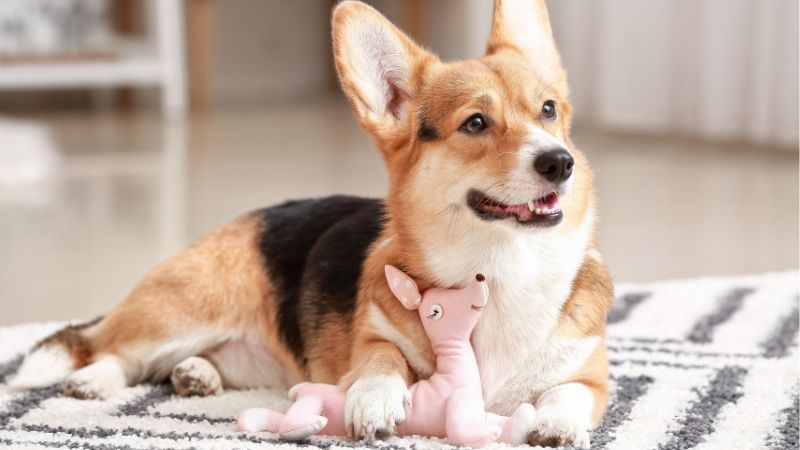
When your dog brings you toys, it’s a way to connect with you and share how they feel. The way you respond can help build trust, encourage polite play, and keep your bond strong.
Encouraging Positive Interactions
If your dog brings you a toy, it’s often a sign they want to interact. You can make your dog happy by taking a moment to notice and praise this behavior. Smile, use a cheerful voice, or gently pet your dog. This helps your dog feel loved and understood.
Try to match your dog’s energy. If they want to play fetch, toss the toy a few times. Dogs often show excitement and energy when bringing you toys, and giving them a little playtime can burn off some of that extra pep.
Sometimes your dog may just want you to admire the toy. You can point, talk about the toy, or even say “Great toy!” This keeps the moment positive, even if you’re busy.
Setting Healthy Boundaries
While play is important, it’s also okay to set limits. If your dog is being too pushy or tries to demand play at the wrong times, use calm signals. You can say “not now” in a gentle, steady voice and put the toy aside.
Consistency matters. If you don’t want to play each time, make sure your response stays the same. This helps your dog learn patience and respect for your space.
Try redirection. If your dog keeps dropping toys in your lap during work or meal times, give them a chew or puzzle toy instead.
Dogs need routine, so setting a regular playtime helps them know when it’s time to play and when it isn’t.
When Toy Bringing Could Signal a Problem
Sometimes, dogs bring you toys for reasons that need your attention. Not every cute gesture is just about play or affection.
Signs of Anxiety or Stress
If your dog is suddenly bringing you toys much more than usual, it could be a sign they’re feeling anxious or stressed.
Dogs like to use their mouths to cope with feelings when something is off in their world. This behavior may increase after big changes, like moving homes or a new pet joining the family.
Some other things to watch for include restlessness, drooling, panting, whining, or pacing along with the toy bringing. Dogs may also hide, follow you closely, or act clingy. When a dog is stressed, you might also notice them trembling or tucking their tail.
Pay attention if your dog only brings you toys during storms, loud noises, or when you’re about to leave. This could mean that they are looking for comfort and security during stressful times.
Possible Behavioral Issues
If your dog gets pushy with toy bringing—like nudging you constantly, barking, or not responding when you ask them to stop—it can be more than just play.
Some dogs develop habits like demanding attention, guarding their toys, or even showing signs of obsession over certain items.
Over time, this can lead to destructive chewing, resource guarding, or even aggression if someone tries to take the toy away.
Dogs who use toy bringing as a way to get your focus might start acting out when you ignore them. This could include barking, pawing, or even nipping.
If you notice any of these behaviors, it could be time for a chat with a vet or trainer.
Fun Ways to Engage With Your Dog’s Toy Bringing
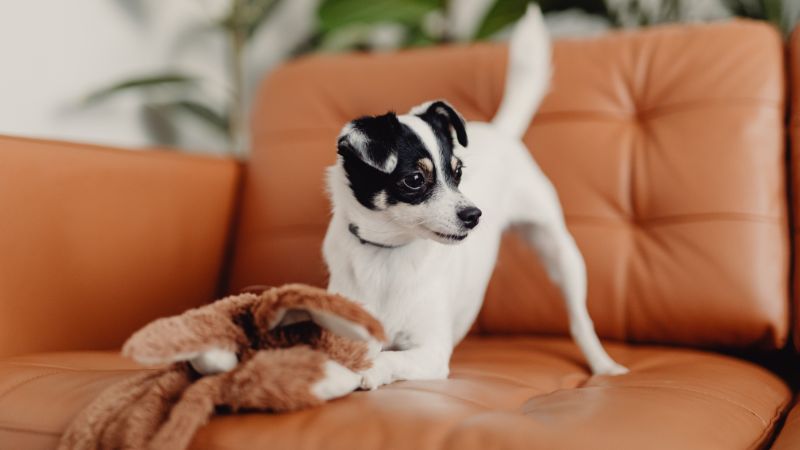
Dogs often bring toys because they want attention, play, or mental challenges. You can make these moments special with fun games and helpful training.
Interactive Games to Play
Playing with your dog’s favorite toys is a great way to bond.
Try fetch in your living room or backyard for a quick, active game. If your dog likes tug-of-war, use a strong dog toy and take turns pulling. This game helps burn off energy and builds trust.
Hide and seek is another fun option. Take the toy and hide it in an easy spot. Ask your dog to “find it” and praise them when they do. This keeps their mind sharp and gives them a challenge.
For more mental work, arrange three cups and hide the toy under one. Mix the cups and encourage your dog to figure out where the toy is. These games work well to keep them excited and mentally busy.
Training Tips for Toy Sharing
Sometimes, dogs get excited and don’t want to give up their toy. Teaching “drop it” or “give” makes playing together smoother and safer. Start by offering a treat and say “drop it” as your dog holds the toy. When they let go, give the treat and praise them.
Practice this in short, happy sessions. Over time, use treats less often and give more praise instead. If your dog brings you toys but pulls them away, stay patient and don’t chase. Wait until they drop the toy, then reward them.
Adding these training steps helps your dog learn that sharing toys is fun. This way, both you and your dog enjoy playtime more.
Conclusion
Cherish these moments as they reflect your dog’s love and need for interaction. To keep your furry friend happy, consider getting them some interactive toys and spend quality time playing together.

